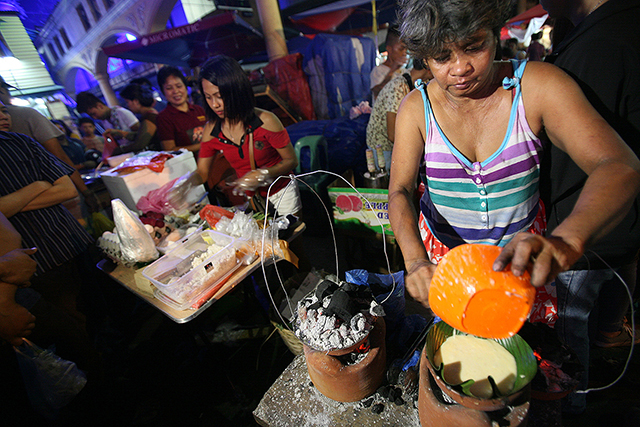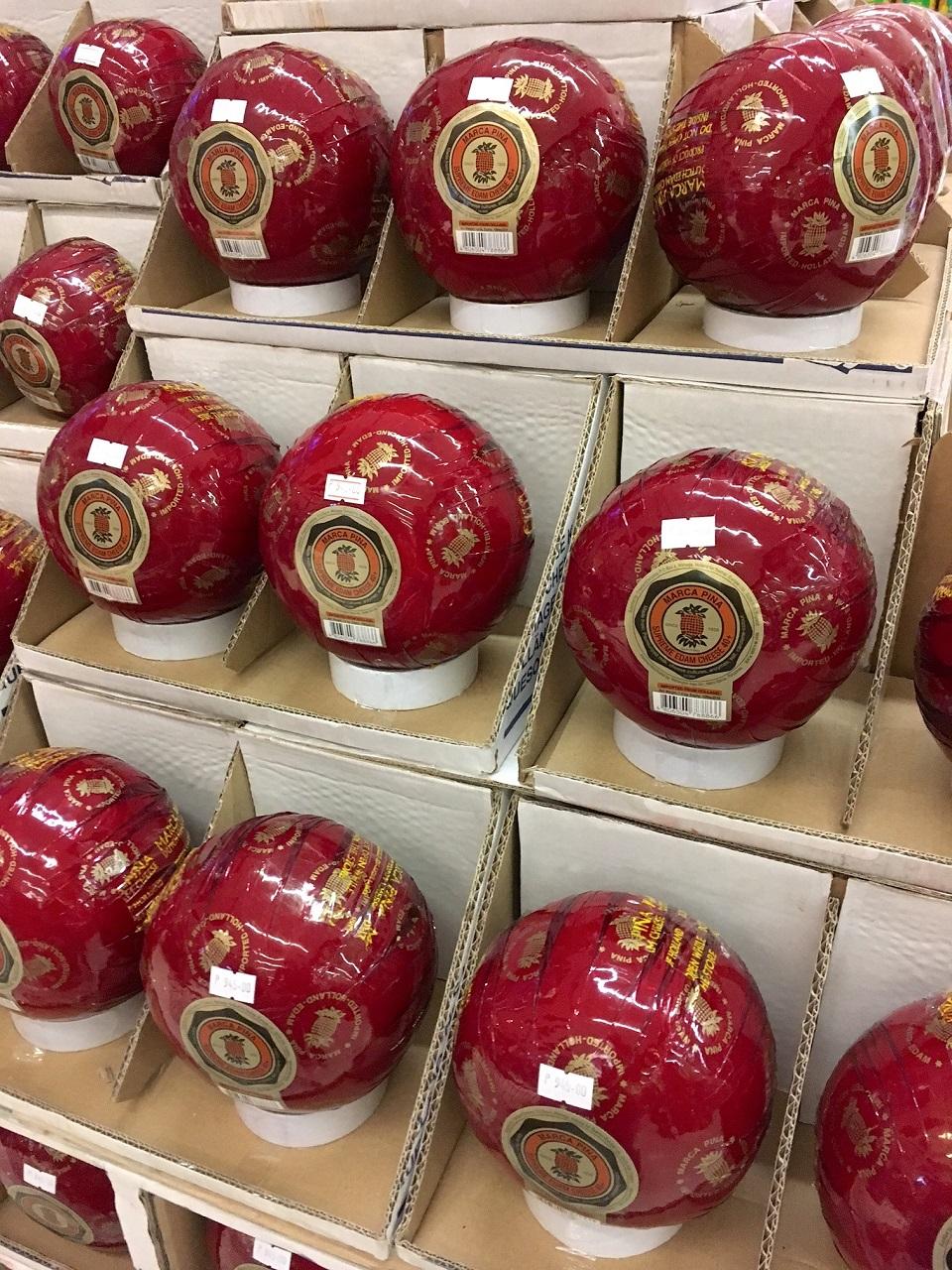What food means Christmas to you?

It’s no surprise to hear Christmas carols on the radio once the -ber months kick in. But we really feel that the holidays are near once we start craving nostalgic treats that remind us of that time of the year. You can feel the Christmas spirit once you get a whiff of the following yuletide goodies.
Castañas (roasted chestnuts)
“Chestnuts roasting on an open fire…” This is the song that most likely popularized this nut variant, and associated it with the holiday season. There are different varieties of chestnuts, but the ones found in Manila mostly come from China.
Although these are small, they send out a strong aroma once cooked and you’ll be rewarded with its sweet and nutty flavor. You’ll see them being roasted in big woks with small stones at weekend markets and sometimes in supermarkets.

Puto bumbong
This native kakanin is named such for its steamed puto (glutinous rice) cooked in bumbong (bamboo). It’s a pretty tedious process to create this delicacy, which starts with soaking, grinding, and drying the galapong (rice dough) then steaming it through narrow bamboo tubes.
It’s traditionally made with black rice, which gives it its purplish hue, but many makers use malagkit with ube (purple yam) instead because of its availability. It is served with butter, muscovado sugar, and freshly grated coconut. Many folks take home this treat after going to simbang gabi (midnight mass), but it’s also available in some markets and Filipino restaurants.
Bibingka

Traditionally, this rice cake is cooked in clay pots that are lined with banana leaves.
Its base is composed of rice flour and coconut milk or water, but some add ingredients such as salted eggs or cheese.
Lit charcoals placed below and above this native cake help bake the mixture. Once cooked, it’s topped with margarine and grated coconut. It’s another local favorite, especially during the midnight mass celebrations.
Christmas ham
Ham is usually the star of the show at any Noche Buena feast, more particularly, Filipino-style ham that has a pineapple glaze. Filipinos tend to have a sweeter palate so this has become a famous flavor profile for this choice meat. Leftovers can be sliced and coated with brown sugar, then pan-fried for a different take on this premium pork.
Fruit cake
Ah, fruit cake—a popular gift that would get passed around from one household to another. It must be because this heavy and dense cake is an acquired taste since it contains a lot of nuts, spices, and mixed dried fruits that are usually soaked in spirits. There’s alcohol—and no chocolate at all—which is most likely why only older adults enjoy this cake.
Queso de bola

Another item that’s always present in any holiday feast is this spherical-shaped, semi-hard cheese with its signature red wax coating.
Edam cheese, or more popularly known as queso de bola for Filipinos, is aged for at least 17 weeks, typically made with skimmed cow’s milk, and has a mild-tasting and slightly nutty flavor, but has a strong aroma.
Simply sliced, or eaten with pan de sal or grapes, it completes the Christmas celebration.
Tsokolate at ensaymada
The local counterpart of hot cocoa with marshmallows is our tsokolate drink made from tablea (blocks of cacao) that is boiled with milk and sugar, and thickened with a batidor (wooden beater). It pairs well with ensaymada, a soft and fluffy bread topped with white sugar and cheese. Even though these are readily available all-year round, it’s still a warm and welcome sight during Christmas morning.
How about you? What other foods make you think of Christmas? — BM, GMA News




